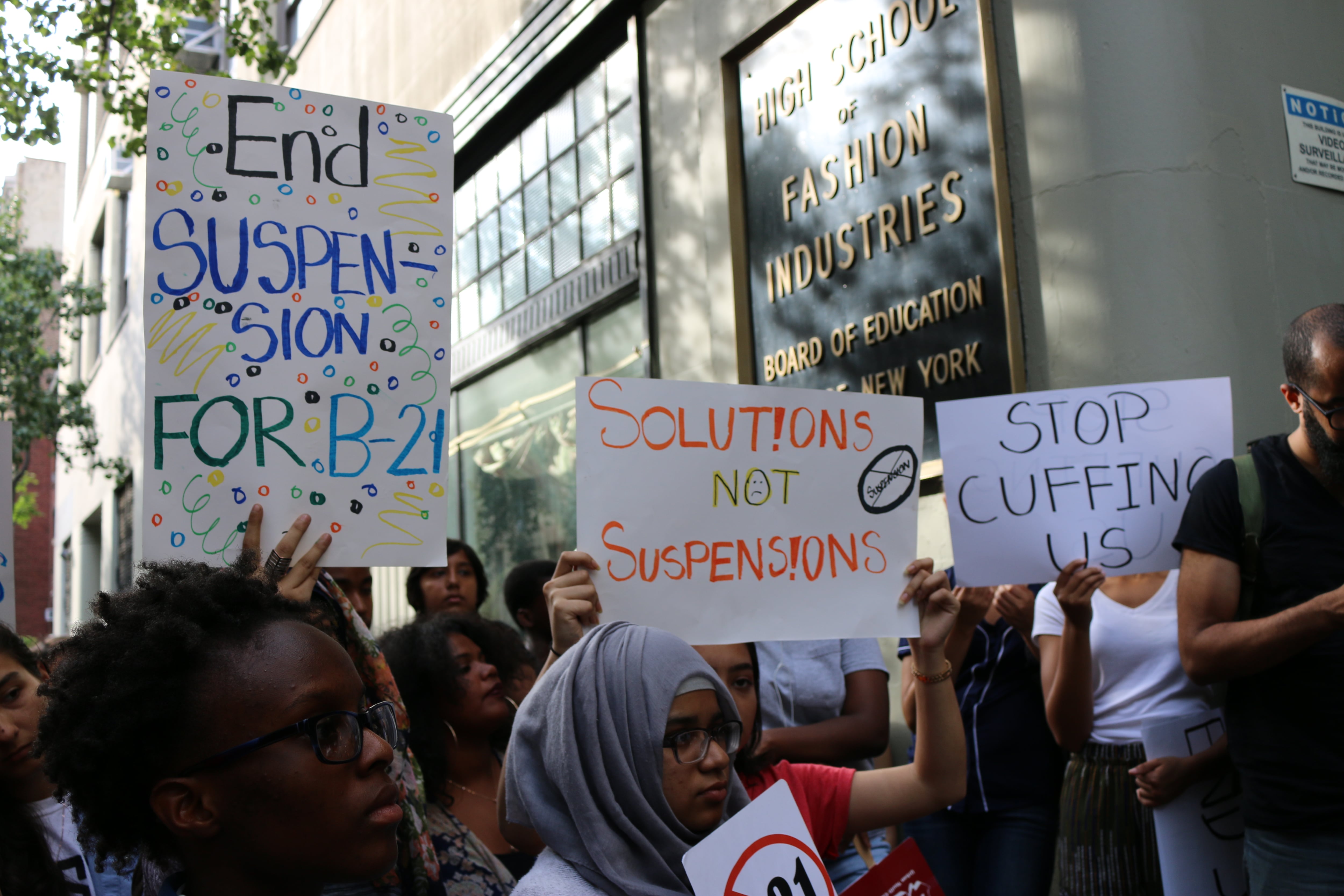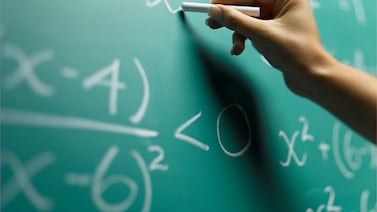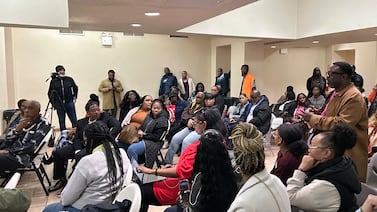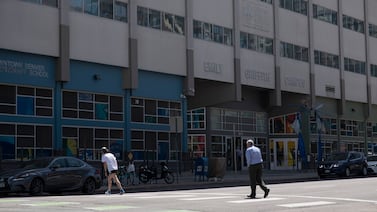Sign up for Chalkbeat New York’s free daily newsletter to keep up with NYC’s public schools.
Suspensions across New York City public schools came roaring back last school year, according to newly released data.
Schools issued 28,412 suspensions during the 2022-23 school year, a 13% spike compared with the 2021-22 school year, the first time students were required to return to school buildings in the wake of the pandemic.
The number of suspensions remained below the most recent academic year before the coronavirus forced school buildings to shutter in March 2020. But with fewer students enrolled in grades K-12, suspensions issued per capita returned to pre-pandemic levels. (The figures do not include charter schools.)
It’s difficult to know exactly why suspensions spiked last school year, the second year students were required to attend school in person since the pandemic. Some other large districts, including Nevada’s Clark County and Broward County, Florida, also have seen suspensions climb toward pre-pandemic levels.
It’s possible educators were reluctant to remove students from their classrooms the first year they returned to school buildings to avoid further disruptions to their learning — a feeling that may have faded last year. Student mental health remains a pressing concern that can affect behavior, and schools are not always well-equipped to handle it. There was also a 9% uptick in the overall number of weapons confiscated in schools last year, according to Police Department data.
Robert Effinger, a social studies teacher at the Bronx High School of Business, said fights and verbal altercations seemed to return to pre-pandemic levels, as students were less wary of the pandemic and masks were largely off. He noted that teachers’ were still dusting off their classroom management skills, too.
“I think some people had forgotten what it was like to go back to normal,” he said, noting that even as students first returned to buildings full time the prior year, they were still readjusting to regular school rhythms and were more skittish.
As in previous years, the new suspension data showed significant disparities between student groups. Roughly 40% of all suspensions went to Black students, though just 21% of students are Black. About 38% of suspensions were issued to students with disabilities, a group that represents about 22% of all students. Latino students represented about 40% of suspensions, roughly in line with their share of the student population. Meanwhile, white and Asian American students were much less likely to be suspended relative to their share of enrollment.
Still, the number of New York City students excluded from their classrooms remained at some of their lowest levels in at least a dozen years, partly the result of discipline reform efforts under former Mayor Bill de Blasio. But as suspensions creep back up, some observers contend that Mayor Eric Adams and schools Chancellor David Banks may be less focused on limiting their use.
Nelson Mar, an attorney at Bronx Legal Services, an organization that represents students in suspension proceedings, worries the uptick could signal “more of a disciplinarian approach” from the Adams administration.
“It definitely reflects the general attitude and approach,” he said.
Adams has ramped up harsher tactics to combat crime, one of his signature issues, though the administration has not sketched out a detailed vision on school discipline or moved to overhaul the discipline code, which spells out the city’s suspension policies. Banks has signaled that he doesn’t favor “zero tolerance” approaches to school discipline, though he has also said there must be consequences for misbehavior.
An Education Department spokesperson did not express concern over the rise in suspensions last year — or their disproportionate use against Black students and children with disabilities — and emphasized that students must follow school rules.
“We are focused on equipping schools with the resources they need to address any issues not only in accordance with our discipline code but in conjunction with meaningful moments for education,” Jenna Lyle, a department spokesperson, wrote in an email.
But some advocates worry that schools will soon have fewer resources at their disposal to address student behavior without resorting to suspensions. The city has used one-time federal relief funding to hire hundreds of social workers and expand funding for restorative justice programs, which prioritize peer meditations and other methods of talking through conflicts. Those programs are on the chopping block next school year as federal relief money runs out. Department officials have not said whether they are looking for alternate funding.
“With each of these, we continue to be concerned about the expiration of federal funding and what that will mean for support for students,” said Randi Levine, policy director at Advocates for Children. “It’s important for students to have access to mental health professionals who can help work with students and help address student behavior.”
The figures also include breakdowns of suspensions by how severe the punishments were. Principal suspensions, which last five days or fewer and are typically served in school, increased nearly 14% last year. More serious superintendent suspensions, which stretch beyond five days and are served at outside suspension sites, increased about 11%. (Superintendent suspensions can technically stretch for an entire school year but have been restricted to 20 days in most cases since 2019.)
Under city law, the suspension data was required to be released publicly by the end of October. Despite requests from Chalkbeat over the past two months, the Education Department declined to release the statistics or explain the delay. Officials ultimately released the figures after Chalkbeat prepared to publish a story about the missing data.
Alex Zimmerman is a reporter for Chalkbeat New York, covering NYC public schools. Contact Alex at azimmerman@chalkbeat.org.






